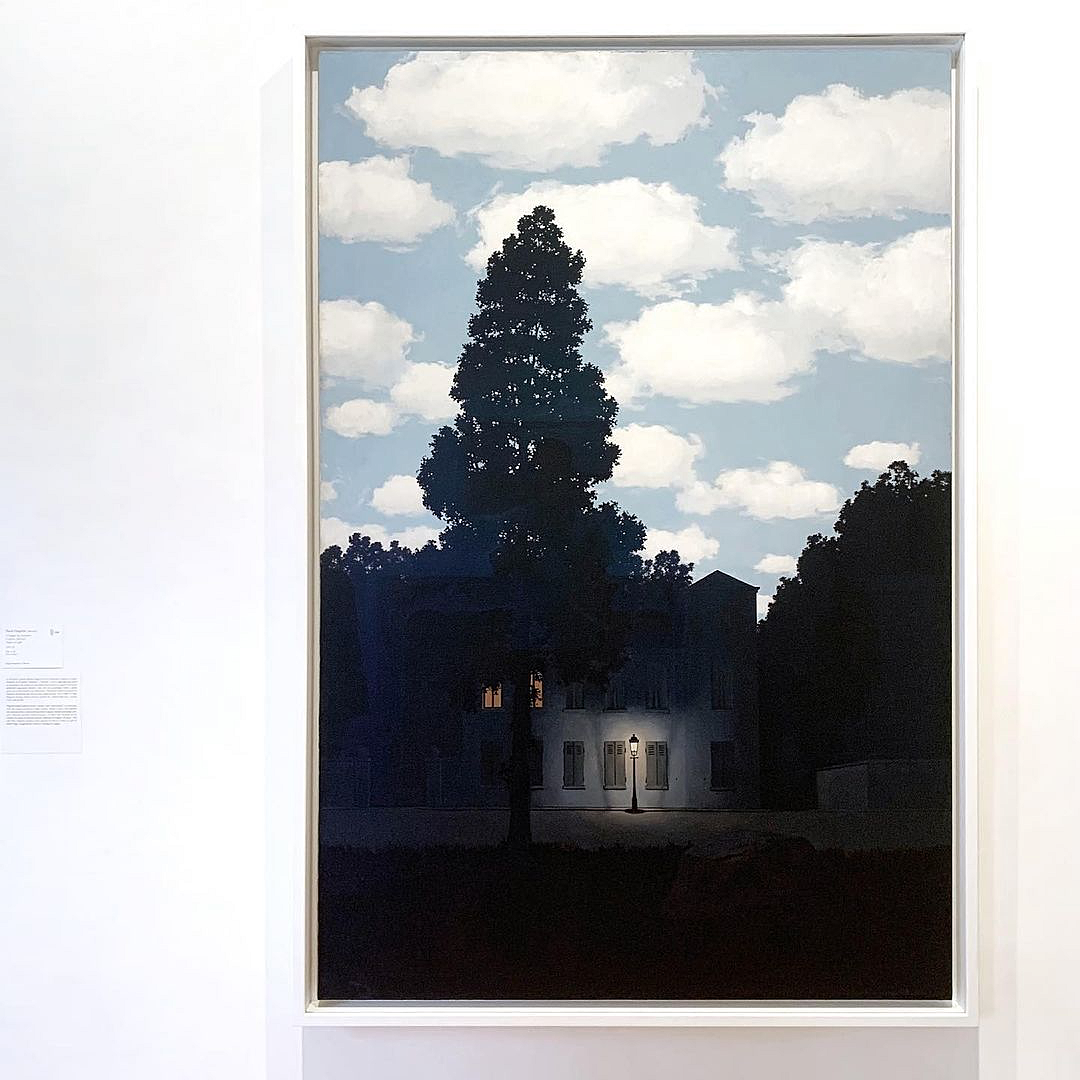
René Magritte (Belgium, 1898–1967)
L'Empire des lumières (The Empire of Light)
oil on canvas
195.4 x 131.2 cm.
Painted in 1954
Collection of Peggy Guggenheim, Venice

Don't you find anything strange about this painting?
It shows a house at night. The canvas is lit only by two lit windows upstairs and a street lamp, but also by the reflection of these lights in a pool of water in front of the house. A night scene, then...
But in the upper part, the blue sky with white clouds is a daytime sky.
Magritte, the surrealist, has thus juxtaposed two paradoxical realities, which never coexist, and this is what creates the impression of strangeness, almost unease.
The themes of dreams and the unconscious, dear to the Surrealists, are present in this house, whose inhabitants seem ready to plunge into sleep once the upstairs bedroom lights are turned off. As for the house, it is a recurring motif in the unconscious, interpreted as a projection of the self, its aspirations and anxieties.
Between 1949 and 1961, Magritte produced 17 oils on canvas and several gouaches depicting this house, which appears to the Belgian artist as an obsessive motif.
William Friedkin, director of the film The Exorcist, was so impressed by the painting that he used it as inspiration for the poster and a scene in his film.

Classic scene of The Exorcist inspired by Magritte’s The Empire of Light










